Application of Efficient Channel Attention Residual Mechanism in Blast Furnace Tuyere Image Anomaly Detection
Abstract
:1. Introduction
2. Materials and Methods
2.1. Related Materials
2.2. Proposed Methods
2.2.1. Reconstruct the Channel Attention Module
2.2.2. Residual Convolutional Block
3. Results
3.1. Experiments
3.1.1. Dataset and Preprocessing
- Large chunks falling: large areas of darkening appear at the air outlet, and the large chunks are melted and disappear by the blast furnace, and the air outlet returns to brightness;
- Material block: gray coke in the blast furnace at the wind outlet for winding movement;
- Normal: the edge of the tuyere is smooth; there are no impurities in the tuyere and no dark area, and the dark area of the coal gun and coal injection is clearly visible;
- Coal breaking: the tuyere boundary is smooth, the tuyere is clear and bright, and there is no dark area produced by the coal injection;
- Slag hanging: there is uneven residue at the edge of the tuyere, and there is a small dark area at the slag hanging, and the gray level is large;
- Wind off: the coke rotation speed is slow, the carbon block gradually accumulates, and the wind is not bright and gradually darkens.
- Expand the data to make the model have a strong generalization ability and to avoid over-fitting. The images are randomly rotated and flipped, and slight changes are added to enrich the dataset;
- In order to reduce the impact of image noise, the region of interest (ROI) of the image is intercepted;
- The image input size is 256 × 256, which reduces the calculation amount of the model and speeds up the calculation speed.
3.1.2. Experimental Parameter Setting
3.2. Discussion of Results
3.2.1. Comparison of Different Indicators of the Models
3.2.2. The Predicted Results of the Model
4. Conclusions
- The ESERNet model greatly reduces the number of parameters, which are 6.23–56.71% less than the other three models, and the average running time of ESERNet is the least; ESERNet greatly reduces the model complexity;
- On the basis of reducing the complexity of the model, the model has high classification performance, and the recognition accuracy reaches 97.10%. The best accuracy of the model is achieved in the classification of coal breaking, wind off, and slag hanging. In the classification of coal breaking, slag hanging, material block and normal, the classification accuracy is the highest compared with the other models.
Author Contributions
Funding
Institutional Review Board Statement
Informed Consent Statement
Data Availability Statement
Acknowledgments
Conflicts of Interest
References
- Zhang, R.; Cheng, Y.; Li, Y.; Zhou, D.; Cheng, S. Image-Based Flame Detection and Combustion Analysis for Blast Furnace Raceway. IEEE Trans. Instrum. Meas. 2019, 68, 1120–1131. [Google Scholar] [CrossRef]
- Cheng, X.; Cheng, S.; Liu, K.; Zhou, D. Measurement study of preheated pulverized coal injection on combustion in a blast furnace raceway by visual detection. Fuel 2020, 271, 117626. [Google Scholar] [CrossRef]
- Wang, Y.; Huang, P. Research on Monitoring Method of Coal Injection Flow Rate in Blast Furnace Tuyere Based on Video. In Proceedings of the 2019 Chinese Control and Decision Conference (CCDC), Nanchang, China, 3–5 June 2019; pp. 3216–3220. [Google Scholar] [CrossRef]
- Li, P.; Liu, H.; Hui, L.; Wang, B.; Xia, Y. Blowing state recognition of basic oxygen furnace based on feature of flame color texture complexity. Comput. Appl. 2015, 35, 283–288. [Google Scholar]
- Cao, J.; Qin, Y.; Ji, X. Judgment method of blowing end point of converter steelmaking based on flame image CNN. Comput. Eng. 2016, 42, 277–282. [Google Scholar]
- Liu, H.; Zhang, Y.; Zhang, Y.; He, Z. Recognition of converter blowing state based on flame image features and GRNN. Comput. Eng. Appl. 2011, 47, 7–10. [Google Scholar]
- Zhang, T.; Zhang, X.; Han, T.; Shi, Z.; Guo, Y.; Wang, H. Application of artificial intelligence image recognition technology in blast furnace tuyere monitoring. Metall. Autom. 2021, 45, 58–66. [Google Scholar]
- Deng, X.; Min, S.; Xu, J.; Li, P.; Xie, H. A review of deep fine-grained image recognition research. J. Nanjing Univ. Inf. Sci. Technol. (Nat. Sci. Ed.) 2019, 11, 625–637. [Google Scholar]
- Yu, W.; Tina, X.; Hou, Z. A new method for image feature description based on regional edge statistics. Chin. J. Comput. 2014, 37, 1398–1410. [Google Scholar]
- Chen, S.; Ma, Y.; Liu, Y.; Wang, H. An Improved Fuzzy Enhancement Algorithm. Electron. Test. 2011, 8, 29–32. [Google Scholar]
- Jun, L. An Improved Digital Image Blur Enhancement Algorithm. Electron. Meas. Technol. 2006, 5, 57–60. [Google Scholar]
- Dong, Y.-N.; Liang, G.-S. Research and Discussion on Image Recognition and Classification Algorithm Based on Deep Learning. In Proceedings of the 2019 International Conference on Machine Learning, Big Data and Business Intelligence (MLBDBI), Taiyuan, China, 8–10 November 2019; pp. 274–278. [Google Scholar] [CrossRef]
- Wang, Z.; Tang, C.; Sima, X.; Zhang, L. Research on Ap-plication of Deep Learning Algorithm in Image Classification. In Proceedings of the 2021 IEEE Asia-Pacific Conference on Image Processing, Electronics and Computers (IPEC), Dalian, China, 14–16 April 2021; pp. 1122–1125. [Google Scholar] [CrossRef]
- Yuan, N.; Kang, B.H.; Xu, S.; Yang, W.; Ji, R. Research on Image Target Detection and Recognition Based on Deep Learning. In Proceedings of the 2018 International Conference on Information Systems and Computer Aided Education (ICISCAE), Changchun, China, 6–8 July 2018; pp. 158–163. [Google Scholar] [CrossRef]
- Chung, Y.-L.; Chung, H.-Y.; Chou, C.-W. Efficient Flame Recognition Method Based on a Deep Convolutional Neural Net-work and Image Processing. In Proceedings of the 2019 IEEE 8th Global Conference on Consumer Electronics (GCCE), Osaka, Japan, 15–18 October 2019; pp. 573–574. [Google Scholar] [CrossRef]
- Pei, Y.; Huang, Y.; Zou, Q.; Zhang, X.; Wang, S. Effects of Image Degradation and Degradation Removal to CNN-Based Image Classification. IEEE Trans. Pattern Anal. Mach. Intell. 2019, 43, 1239–1253. [Google Scholar] [CrossRef] [PubMed]
- Xi, Y.; Jia, W.; Zheng, J.; Fan, X.; Xie, Y.; Ren, J.; He, X. DRL-GAN: Dual-Stream Representation Learning GAN for Low-Resolution Image Classification in UAV Applications. IEEE J. Sel. Top. Appl. Earth Obs. Remote Sens. 2020, 14, 1705–1716. [Google Scholar] [CrossRef]
- Hu, J.; Shen, L.; Albanie, S.; Sun, G.; Wu, E. Squeeze-and-Excitation Networks. IEEE Trans. Pattern Anal. Mach. Intell. 2020, 42, 2011–2023. [Google Scholar] [CrossRef] [PubMed] [Green Version]
- Li, Y.; Guo, P.; Guo, X.; Xu, J. Study of convolutional neural network based on fusion residual mechanism. In Proceedings of the 2020 IEEE International Conference on Information Technology, Big Data and Artificial Intelligence (ICIBA), Chongqing, China, 6–8 November 2020; pp. 632–635. [Google Scholar] [CrossRef]
- Zaeemzadeh, A.; Rahnavard, N.; Shah, M. Norm-Preservation: Why Residual Networks Can Become Extremely Deep? IEEE Trans. Pattern Anal. Mach. Intell. 2020, 43, 3980–3990. [Google Scholar] [CrossRef] [PubMed]
- Zhang, K.; Sun, M.; Han, T.X.; Yuan, X.; Guo, L.; Liu, T. Residual networks of residual networks: Multilevel residual networks. IEEE Trans. Circ. Syst. Video Technol. 2018, 28, 1303–1314. [Google Scholar] [CrossRef] [Green Version]
- Cheng, Z.; Chu, Z.; Yang, M.; Zhang, Y.; Wang, L. Non-intrusive load decomposition and recognition based on Seq2point and SERNet. J. Anhui Univ. (Nat. Sci. Ed.) 2022, 46, 38–44. [Google Scholar]
- Yang, P.; Zhang, Y.; Hu, Z. Lane Line Detection Algorithm Based on Improved RepVGG Network. Traffic Inf. Saf. 2022, 40, 73–81. [Google Scholar]
- Tao, Y.; Zongyang, Z.; Xi, Z. Experimental design of orbit target detection based on ResNeXt convolutional neural network. Exp. Technol. Manag. 2021, 38, 237–242. [Google Scholar]
- Wang, Y.; Huang, P.; Yang, G. A Visual PCI Blockage Detection in Blast Furnace Raceway. ISIJ Int. 2020, 60, 519–527. [Google Scholar] [CrossRef] [Green Version]


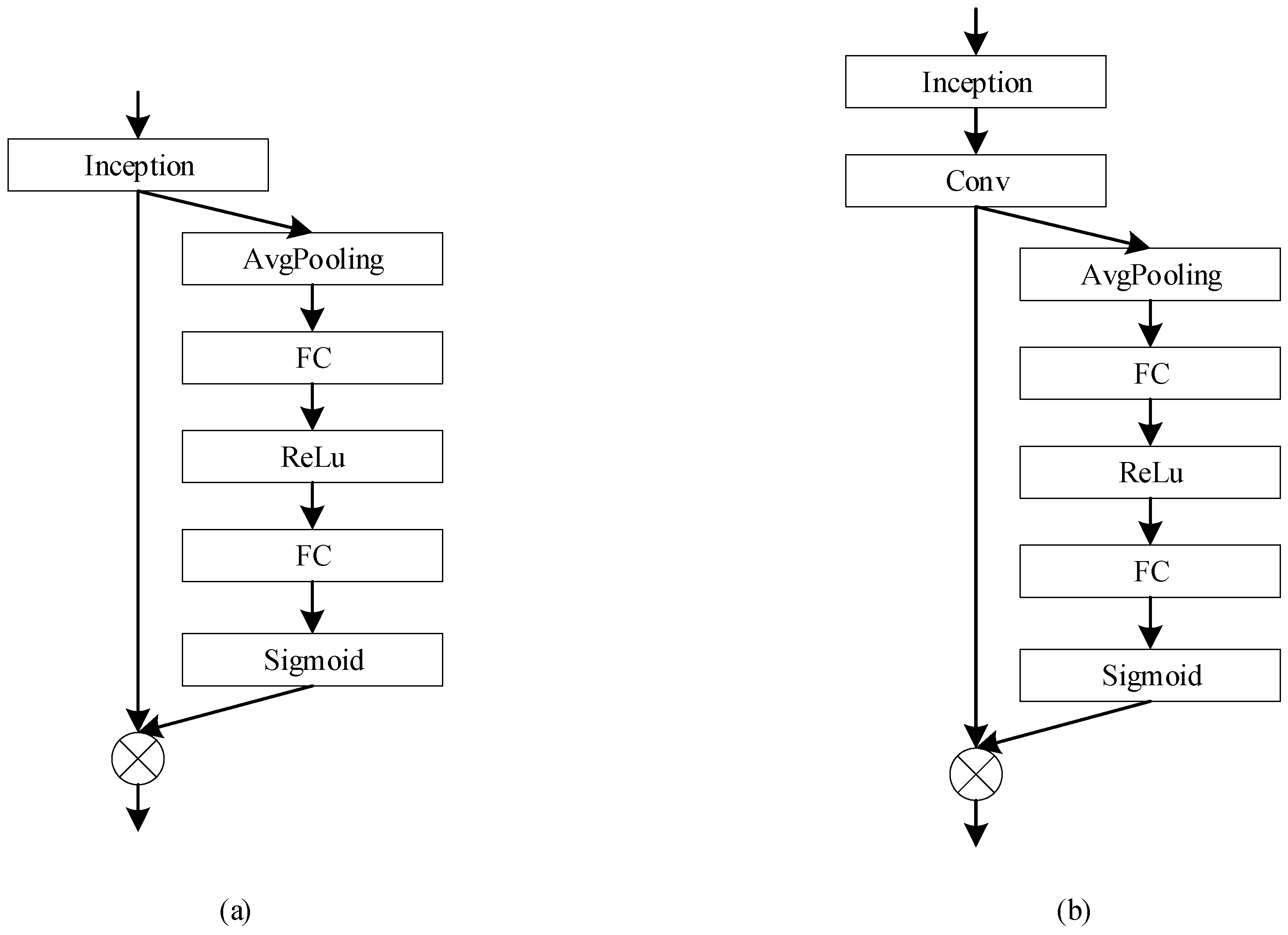
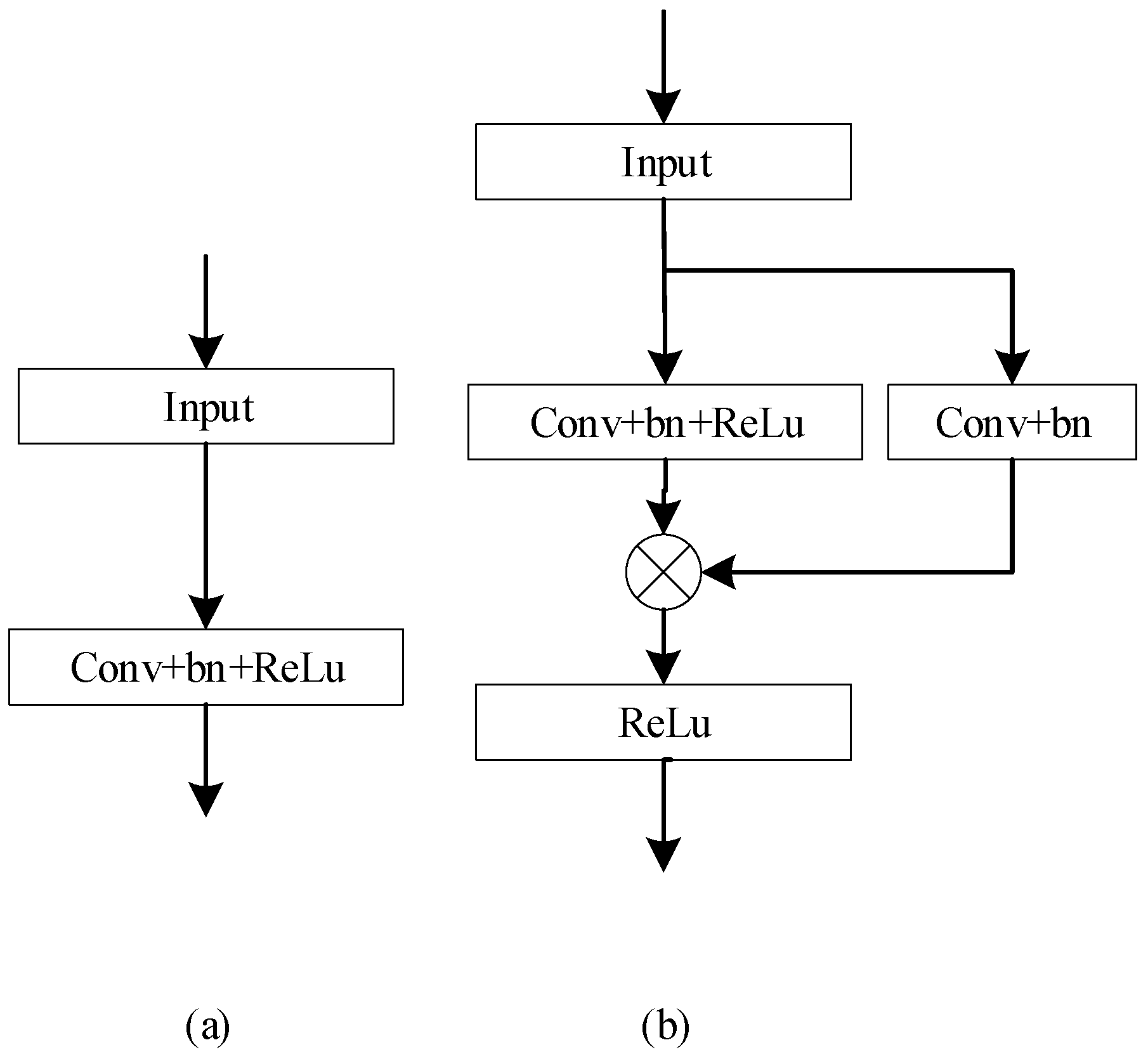
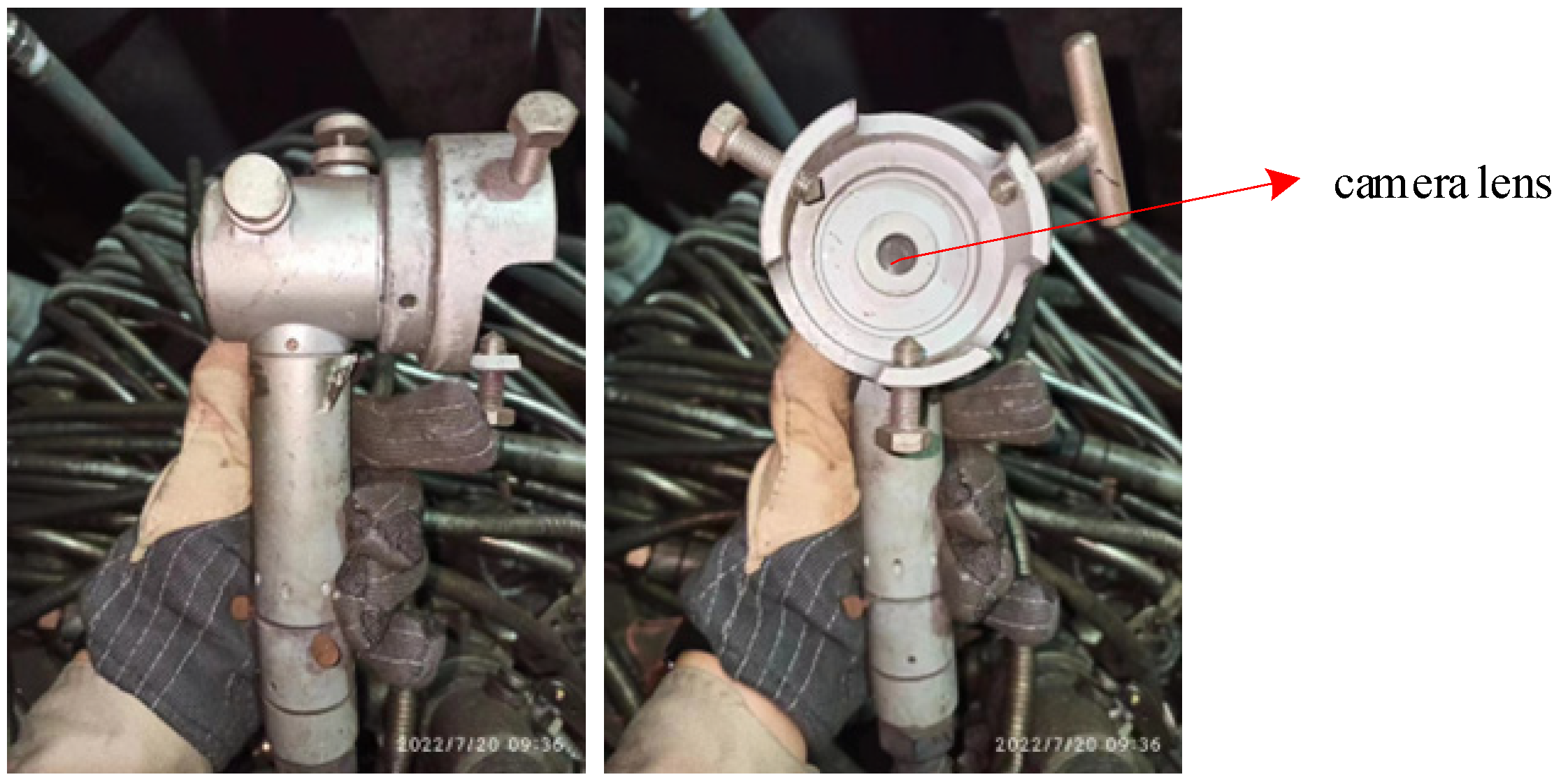
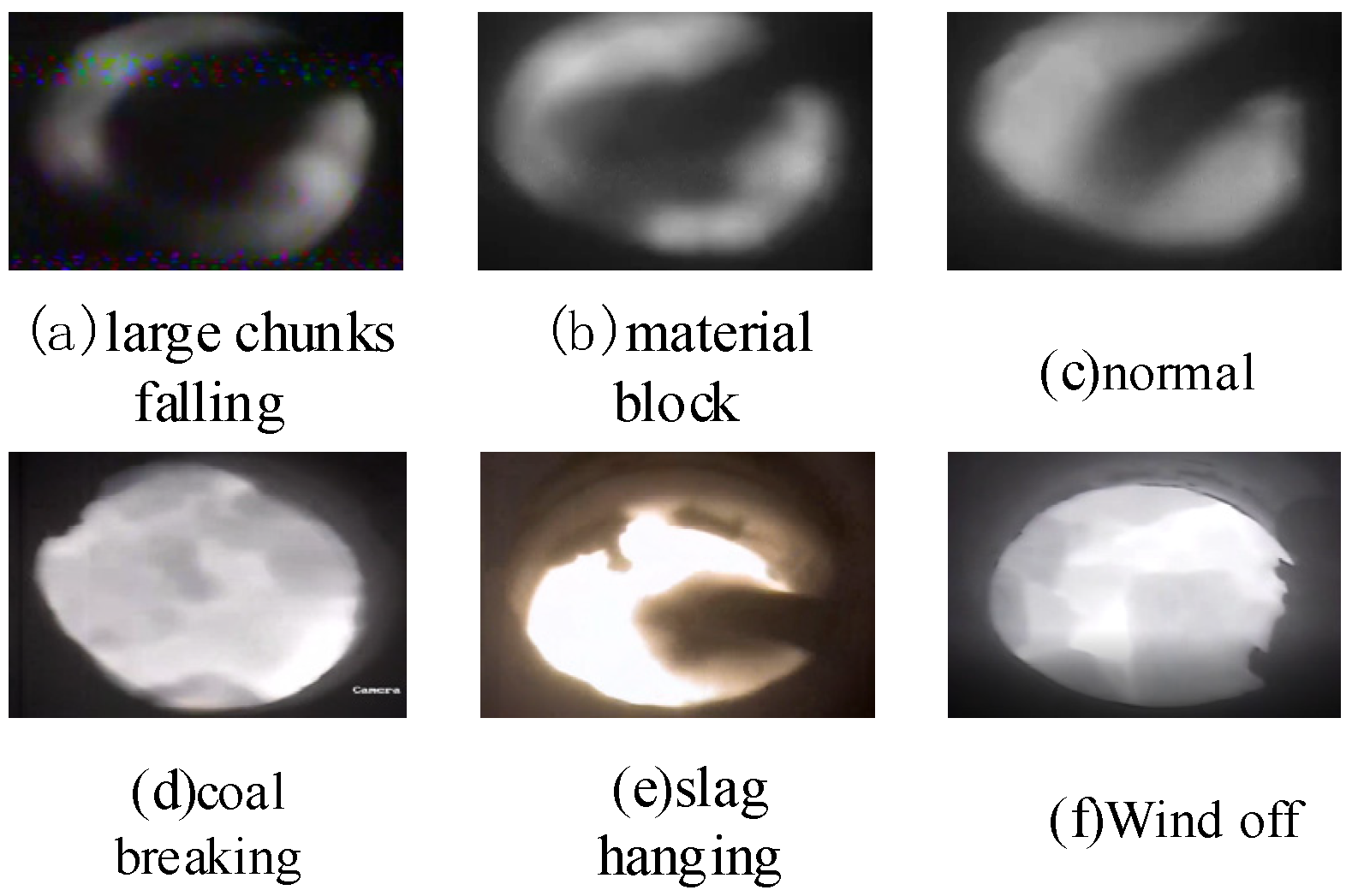

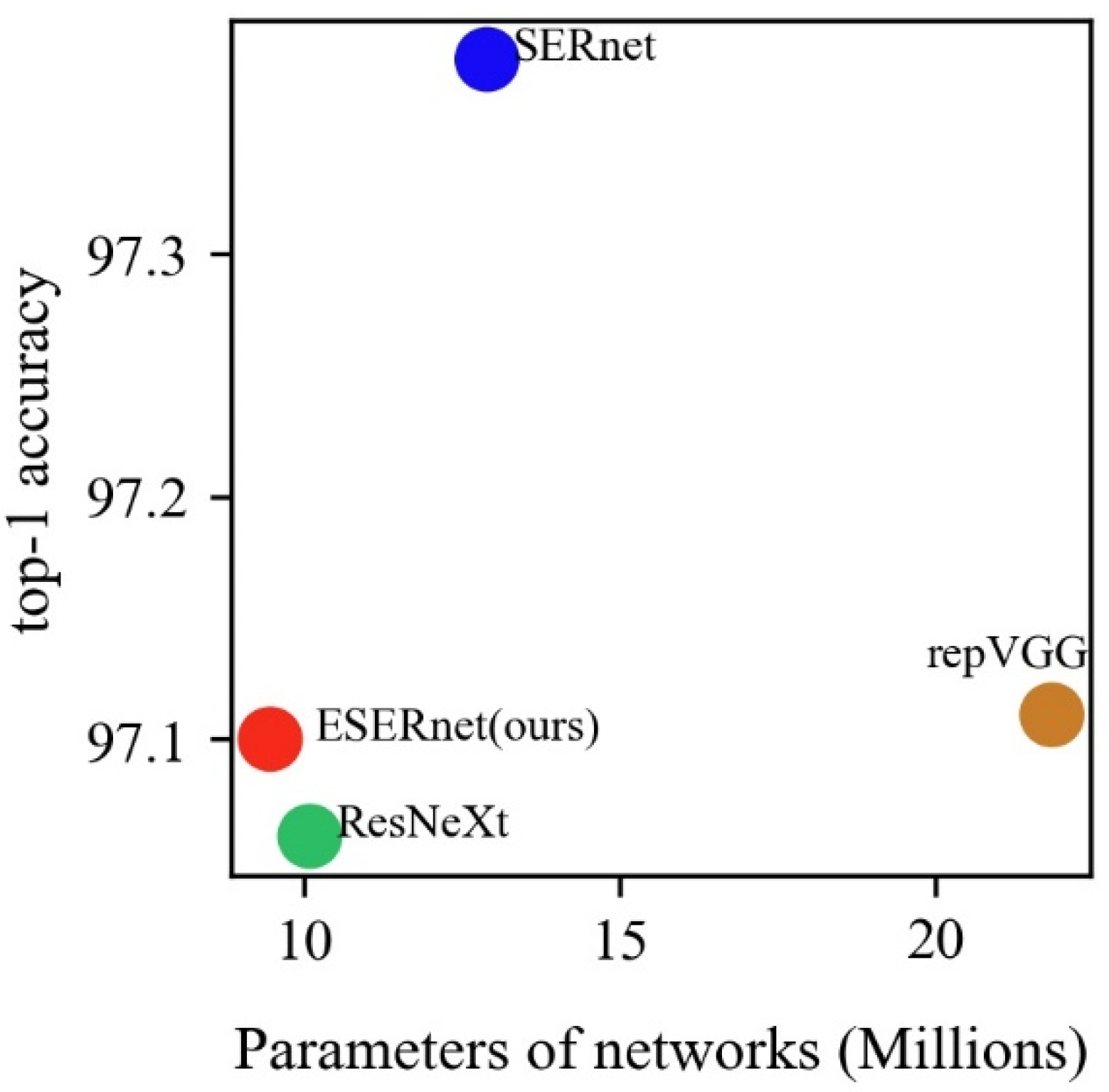
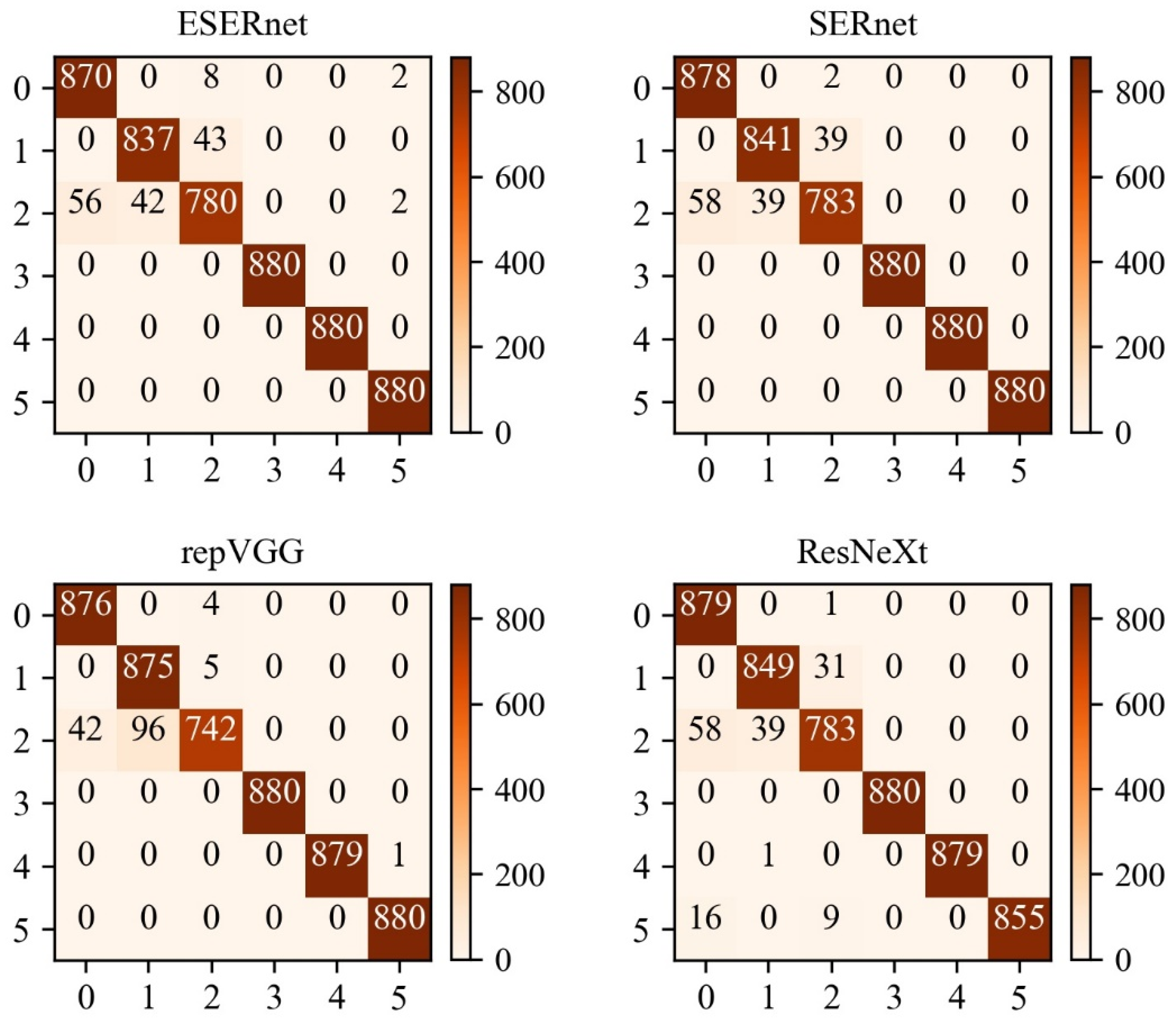
| Model | Batch Size | Learning Rate | Average Accuracy |
|---|---|---|---|
| ESERNet | 32 | 0.1 | 96.73% |
| SERNet [22] | 16 | 0.1 | 97.01% |
| repVGG [23] | 32 | 0.1 | 96.74% |
| ResNeXt [24] | 32 | 0.1 | 96.69% |
| Model | Average Running Time (ms) |
|---|---|
| ESERNet | 2.94 |
| SERNet | 3.32 |
| repVGG | 4.13 |
| ResNeXt | 3.63 |
| Image Type | ESERNet | SERNet | repVGG | ResNeXt |
|---|---|---|---|---|
| Wind off | 99.09% | 100.00% | 100.00% | 98.01% |
| Slag hanging | 100.00% | 100.00% | 100.00% | 100.00% |
| Coal breaking | 100.00% | 100.00% | 100.00% | 100.00% |
| Large chunks falling | 96.96% | 96.88% | 98.07% | 97.36% |
| Material block | 93.52% | 93.41% | 93.41% | 93.41% |
| Normal | 97.53% | 96.90% | 96.90% | 97.51% |
Publisher’s Note: MDPI stays neutral with regard to jurisdictional claims in published maps and institutional affiliations. |
© 2022 by the authors. Licensee MDPI, Basel, Switzerland. This article is an open access article distributed under the terms and conditions of the Creative Commons Attribution (CC BY) license (https://creativecommons.org/licenses/by/4.0/).
Share and Cite
Wang, R.; Li, Z.; Yang, L.; Li, Y.; Zhang, H.; Song, C.; Jiang, M.; Ye, X.; Hu, K. Application of Efficient Channel Attention Residual Mechanism in Blast Furnace Tuyere Image Anomaly Detection. Appl. Sci. 2022, 12, 7823. https://doi.org/10.3390/app12157823
Wang R, Li Z, Yang L, Li Y, Zhang H, Song C, Jiang M, Ye X, Hu K. Application of Efficient Channel Attention Residual Mechanism in Blast Furnace Tuyere Image Anomaly Detection. Applied Sciences. 2022; 12(15):7823. https://doi.org/10.3390/app12157823
Chicago/Turabian StyleWang, Rihong, Ziyu Li, Lingzhi Yang, Yuming Li, Hao Zhang, Chuanwang Song, Mingjian Jiang, Xiaoyun Ye, and Keyong Hu. 2022. "Application of Efficient Channel Attention Residual Mechanism in Blast Furnace Tuyere Image Anomaly Detection" Applied Sciences 12, no. 15: 7823. https://doi.org/10.3390/app12157823
APA StyleWang, R., Li, Z., Yang, L., Li, Y., Zhang, H., Song, C., Jiang, M., Ye, X., & Hu, K. (2022). Application of Efficient Channel Attention Residual Mechanism in Blast Furnace Tuyere Image Anomaly Detection. Applied Sciences, 12(15), 7823. https://doi.org/10.3390/app12157823







